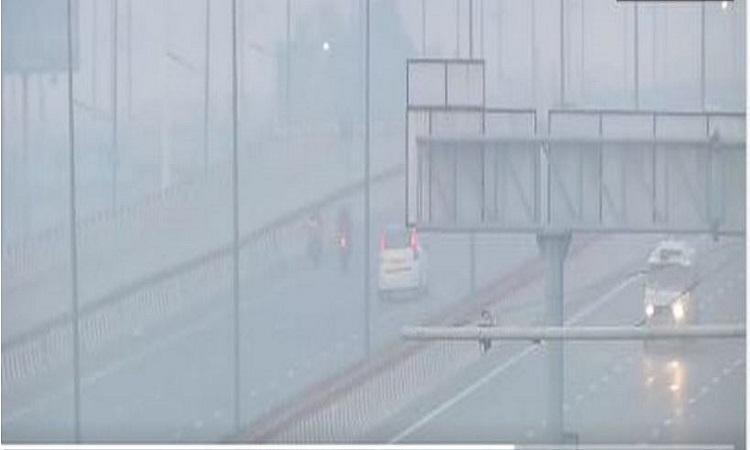 English
English

The air quality in the national capital improved marginally to ‘very poor’ from ‘severe’ on Saturday morning. Read further on Dynamite News:

New Delhi: The air quality in the national capital improved marginally to 'very poor' from 'severe' on Saturday morning. The overall Air Quality Index (AQI) in the Capital dropped from 461 at 7 am on Friday to 398 this morning, settling in the 'very poor' category.
However, the downward shift in the air quality index was of little respite to residents as a dense, toxic haze continued to shroud the city.
A morning walker at Kartavya Path said, "We are finding it difficult to breathe. Senior citizens and children are especially at the receiving end of the prevailing foul air in the city."
According to the System of Air Quality and Weather Forecasting And Research (SAFAR-India), the air quality index at Ghazipur was recorded at 398 at 7.15 am on Saturday.
Another morning walker told ANI that the prevailing toxic air was giving rise to respiratory problems. "There is significant pollution in the air, which is giving us health problems," he said.
Amid the prevailing concerns about high levels of air pollution, Delhi Environment Minister Gopal Rai, on Friday, sought the Centre's intervention in reversing the city's declining air quality.
"This situation is persisting in all of north India. Besides Delhi, 12 districts of neighbouring Haryana are recording air quality in the 'severe' range. There are 14 locations in Rajasthan as well where the air quality has deteriorated. Several districts in western Uttar Pradesh, too, have reported a similar situation,".
Earlier, on Thursday, Rai said a 6-member special task force has been formed, under the leadership of the Environment Special Secretary for proper implementation and monitoring of GRAP rules.
Nine out of 11 state capitals analysed in India recorded higher pollution in the first 12 hours after Diwali celebrations this year as compared to last year. The government's National Clean Air Programme (NCAP) tracker analysed PM 2.5 (fine particulate matter) data for 11 capital cities. The highest spike (recorded at 15-minute intervals) was seen in the national capital Delhi. It was 999.5 ug/m3 at Pusa on November 13 at 1:30 am.
The highest spike (recorded at 15-minute intervals) was seen in the national capital Delhi. It was 999.5 ug/m3 at Pusa on November 13 at 1:30 am.
The NCAP Tracker is a joint project by Climate Trends and Respirer Living Sciences to create an online hub for the latest updates on India's clean air policy, the National Clean Air Programme (NCAP). The data was sourced from the Continuous Ambient Air Quality Monitoring Stations (CAAQMS) of the Central Pollution Control Board (CPCB).
Crackers were burst in the national capital and other cities on Diwali despite alarming pollution levels and the Supreme Court's ban on fireworks during the festivities. (ANI)